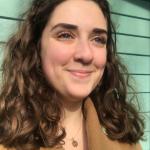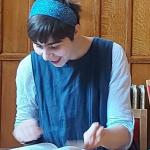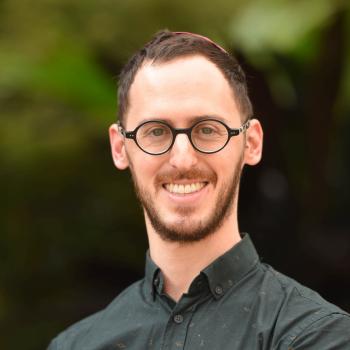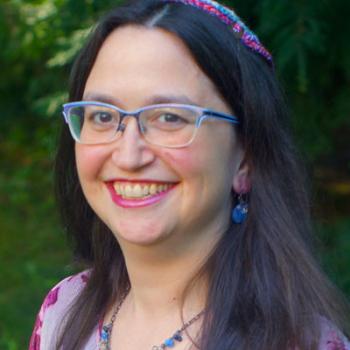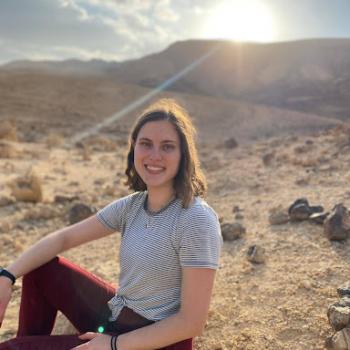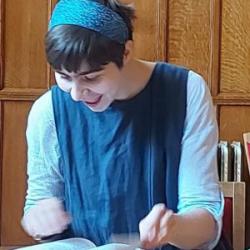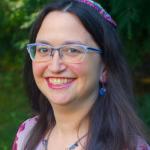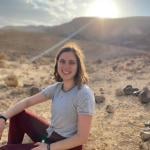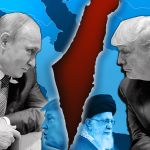Parahat Sh’lach Numbers 13:1-15:41
When I take a moment to pick my head up out of my inbox and meetings and other work, I am reminded that what enables me to move through these challenging times is relationships. Thankfully, Jewish tradition has much to say about relationships—with individuals, with places, and with ourselves— and the importance of finding ourselves grounded in a community, rather than being alone. It’s this call to connectedness that I have been carrying with me over the past however much time; the call to be in relationship with others, to acknowledge the way our fates are intertwined.
Parshat Shlach offers several entry points into a conversation about relationship, interconnectedness, and the potential of common vision. As I opened the parsha, I found myself wondering what collective vision the Israelites were holding or what assumptions they were making of each other as they wandered in the desert. I imagine that their sense of their fates being entwined was more real than what I am reaching for on any given day, understanding that they were safer in a collective rather than alone in the wilderness.
Yet my sense of a broader collective understanding was disrupted right from the opening lines:
וַיְדַבֵּר יְהֹוָה אֶל־מֹשֶׁה לֵּאמֹר׃ שְׁלַח־לְךָ אֲנָשִׁים וְיָתֻרוּ אֶת־אֶרֶץ כְּנַעַן אֲשֶׁר־אֲנִי נֹתֵן לִבְנֵי יִשְׂרָאֵל
Gd spoke to Moses saying: Send for yourself people and they will look around the land of Canaan that I give to the Israelites.
The phrase “Gd spoke to Moses saying: send for yourself ” (Num 13:1-2) already introduces tension. Gd says, “send for yourself?” What is happening here? Are scouts being sent out for Moses? Or at Gd’s command? Or for another reason? There is a hint, I think, in the Talmud’s teaching on this moment — “Send for yourself”, the Gemara teaches, Gd is not commanding you, for Gd already told you what this land was like and who was there (Sotah 35b). Perhaps then the scouts are needed because the people did not believe Moses’ prior statements about their future, or they had not yet developed a deep trust for Hashem’s words and needed to see the land for themselves.
So Moses sends 12 men to scout the land, requesting details about the land and its inhabitants. As the scouts return, initial reports indicate that the land is indeed bountiful and the people formidable. It is at that moment that Calev jumps in answering an unasked question. “Let us surely go up,” he says (Num 13:30), perhaps responding to murmuring that would lead to unrest, as the text reads later on that it does (Num 14:1). I wonder, though, if Calev is responding to a greater question – do he and the other scouts share a common understanding that they will be going up to the land, regardless of the strength of the other people there? Do they share a similar faith in the Gd that has brought them out of Egypt?
I appreciate that our Torah includes moments of communal disagreements, itself a tool for “getting onto the balcony” of what is happening in our communities today. It is not my intention to map the discussion between Calev, Yehoshua and the rest of the scouts onto our modern day conversations about the role of Israel in our current and future communal conversations, but rather to wonder more generally how high on the balcony or out of the specifics of any given conversation we need to get to find a collective place from which to disagree. I’ve been playing around with the boundaries of this interconnectedness in my own mind — pushing to see how wide my awareness of connection might go. In debate or communal dialogue, I find myself landing on the question “what is the thing we can all agree on that can be the basis for relationship and trust to help enable the harder conversations?”
Our parsha suggests one possible collective place. At the end of our parsha, we read the text of the third paragraph of the Shema in its Torah context and are linguistically brought back to the opening through the world “taturu.” The same root is used at first to describe the actions of the spies (Num 13:2), to go around, to spy, to look; and what the tzitzit (fringes on our four cornered garments or prayer shawls) are supposed to help us prevent — our wandering after our own hearts and minds (Num 15:39), as opposed to Gd’s plans for us. The language of the shema is a recast of the disagreement between the 10 spies who say we can not conquer the land and Calev and Joshua, who say we can, into covenantal language, prayer, and embodied ritual.
The Shema is a call to listen to that which unites us as a community and a reminder that we are a collective. It is also a reminder that our collective identity is expressed through mitzvot, such as tzitzit, which keep us focused on a path of ancestral wisdom towards peace and wholeness. Many people have the custom of bringing the fringes of their prayer shawls together during Shema to embody that gathering together of our community.
Elsewhere in the Talmud, the rabbis teach: A person’s mind should always be entwined with the creations. (Ketubot 17a). Entwined, like our tzitzit, calling back to the moment of covenant, both the covenant Gd made with Noah that connects all humanity and the earth and the covenant at Sinai that forms a Jewish collective.
As we continue to navigate the uncertainty and tragedy in our communities and our world, may we be held by the covenant made to our ancestors, seeing ourselves and each other as part of a collective entwined with each other, each walking along pathways of peace.
Rabbi Becky Silverstein (Hebrew College Rabbinical School `14) believes in the power of community, Torah, and compassion to transform the world. Becky is currently a principal at Horizon Philanthropy: Jewish Funders for a Just Future.


